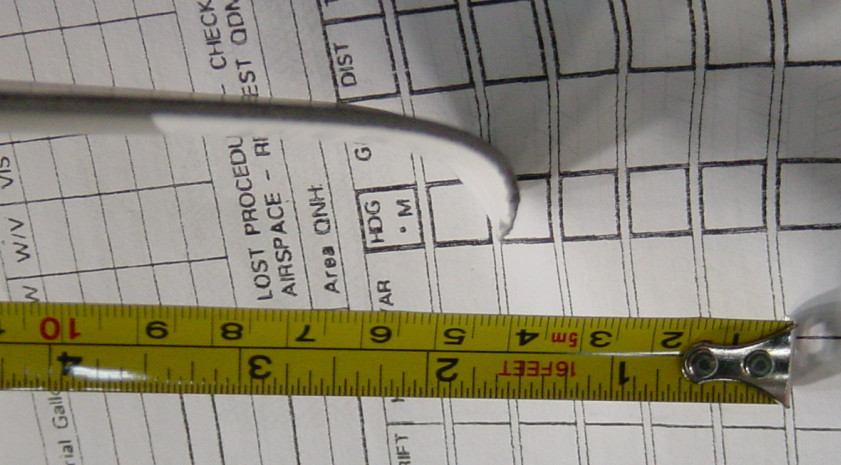
Whether this will affect overhaul costs on a whole engine is a good Q. On an overhaul you install new cylinders and pistons, you don’t normally need crankcases, crankshaft, conrods. Cylinders are about $1000 each. So most of it is labour and profit margin.
Important question: will those price decreases only apply to overhauls by Lycoming and its licensees, or also to loose parts bought by anyone?
I have had two major overhauls recently and needed two crankcases and two camshafts, but no cylinders or pistons, so your results may vary.
I have heard, but have no evidence, that new Lycoming crankshafts are of infinitely lower quality than in the past and that you might actually be better of with an old one. Has anyone else heard that?
Lycoming has been under pressure by PMA holding competitive suppliers for a number of years, as well as Experimental parts suppliers. It’s obvious the consumer is benefiting, especially as the range of parts being supplied by others progressively increases.
It looks to me like the price being discussed is the manufacturer’s suggested retail, which is the parts price that Lycoming charges retail customers. Wholesale customers (independent part distributors and overhaul shops) presumably pay less, and are free to ask whatever retail price their market will bear.
The only thing about an engine overhaul that is assured by the regulation covering the use of that term is that the engine is disassembled, all wearing parts are measured and all parts used for reassembly are found to be within service limits (not new limits). Everything else is between the guy who owns engine and the people doing the overhaul.
I have had two major overhauls recently and needed two crankcases
That could be due to fretting (improperly torqued / not checked crankcase bolts) which shags crankcases quite fast. Or the crankcases have been machined too many times, possibly combined with fretting under previous ownerships. Eventually you can’t machine them any more and they are scrap. Or cracks, often caused by prop strikes, especially prop strikes which were swept under the carpet.
but no cylinders or pistons,
If you had an OH without new cylinders, I’d say that is a false economy on an IO540.
I have heard, but have no evidence, that new Lycoming crankshafts are of infinitely lower quality than in the past and that you might actually be better of with an old one. Has anyone else heard that?
I have not heard that in relation to crankshafts made after the FAA “overhauled” their QA c. 10 years ago. It may be true, but it would surprise me. Crankshafts have a very long life, often doing half a dozen overhauls before the bearing surfaces can’t be reground anymore. So if somebody said a crank is “low quality” I’d like to know in exactly what way.
My new engine has a crank from the early 1990s… Back then, or maybe even much further back, they were made by Krupp  and not a single one ever failed in service (I have this from one old US engine shop guy who should know).
and not a single one ever failed in service (I have this from one old US engine shop guy who should know).
Between 1997 and about 2005 (?) a lot of bad stuff was made, with the worst sometime during 1997-2002 when some heat treatment stages were missed.
The only thing about an engine overhaul that is assured by the regulation covering the use of that term is that the engine is disassembled, all wearing parts are measured, and all parts used for reassembly are found to be within service limits (not new limits). Everything else is between the guy who owns engine and the people doing the overhaul.
True, although I have always (well, twice, to date) had the engine rebuilt to new limits throughout. It seems hardly worth doing less, for all the hassle and downtime, and risk…
The guy who gave me the article in my original post did comment on whether I have regrets not having waited a bit longer but I don’t think it would have had a significant bearing (hoho) on what I paid. Also my last Annual expired end of Jan 2017 so…
Peter wrote:
That could be due to fretting (improperly torqued / not checked crankcase bolts) which shags crankcases quite fast. Or the crankcases have been machined too many times, possibly combined with fretting under previous ownerships. Eventually you can’t machine them any more and they are scrap. Or cracks, often caused by prop strikes, especially prop strikes which were swept under the carpet.Timothy wrote:
but no cylinders or pistons,
If you had an OH without new cylinders, I’d say that is a false economy on an IO540.
Well, as ever, you have to know the whole story, which is long and sad, but suffice it to say that the pistons and cylinders were in perfect condition. They had flown 400 hours before the first overhaul and four more before the second.
Is four hours between rebuilds a record?
I might hold the record for the earliest shock load inspection following delivery of a brand new aircraft.
1 hour.


A UK CAA LAME (licensed aircraft maint engineer) offered to file the ends off, adding that since the engine didn’t stop, a shock load is not necessary 
Ouch.
Peter wrote:
A UK CAA LAME (licensed aircraft maint engineer) offered to file the ends off, adding that since the engine didn’t stop, a shock load is not necessary
Was there in fact any damage to the engine resulting from this prop strike on your IO-540? The chance of damage is highly engine model dependent.
I don’t think so. There almost never is.